Pernille Ripp's Blog, page 64
December 10, 2015
I Wish, I Wish – A Gift Guide (Or Not) For Teachers
 image from icanread
image from icanreadA few years ago, I wrote this blog post by request on a now defunct blog. Since I was just asked about this again, I thought it would only be fitting to re-post it with a few updates.
Every holiday season without fail I pick up a well renowned women’s magazine and find gift suggestion for teachers. And every year I am surprised that magazines continue to perpetuate the myth that teachers like apples. I am not sure what the history behind this supposed infatuation is, but I am here to say it is not true. I like apples, don’t get me wrong, but I do not like apple-shaped things, no matter how expensive they are. So upon some pushing from my husband and friends, I present to you some gift ideas for the teacher in your life.
First a note; this does not mean you need to buy teachers gift, I am not advocating that, this is merely a guide for those who do choose to give teachers presents.
First the don’ts:
Stay away from the apples. Some teachers do find apple shaped things cute, most don’t. I am amazed at the sheer market of apple shaped things that are out there, who would have known that you could get a crystal encrusted hard perfume shaped like an apple for a mere $80. No thank you.
Be aware of scented things. Some people are allergic to certain scents while others just have incredibly delicate noses, I fall in the latter category. One year I witnessed a colleague receive an incredible gift set of lotions, candles, and home fragrance stuff, and while she was indeed incredibly grateful, the scent made her sneeze violently so much so that she ended up giving it away.
Say no to the lotion – unless you know the brand that they use. I have been to a fellow teacher’s house who had an entire cabinet of various lotions, so much lotion that she would never be able to use it all in her lifetime. I like lotion but I am picky with the one I use, back to the whole scent point, so these crazy gift-sets with all the body goodness? Maybe not the best idea.
Be wary of jewelry. I know a lot of teacher with nickel allergy, myself included, which means that pretty much any jewelry that is not sterling silver or 14k yellow gold will give us a nasty allergic reaction (because of the nickel mixed in the metal to make it look like silver). Therefore, jewelry is often not a great idea because we want to wear it to show our appreciation. I have had friends that have gotten such bad rashes from their gratitude that they had to go to the doctor.
A note on handmade. I like handmade things, if they are useful. I once received a pair of hand-knitted socks and I use them every night for sleeping. These socks remind me of the student and the care that they took to have their grandmother knit them for me. I love those socks. Handmade, however, should be something that can be used and not as a decoration. I have a very sparse home and I feel incredibly guilty when I do not display things that have been made for me, however, I would never be able to relax in my own house if I did.
So then the do’s:
Do write a note. Often this is the best present we can get. If a teacher has shaped your life somehow or if you like what they are doing – tell them. This present beats all of the other presents hands downs every year. I have half of a drawer filled with the notes I have received and I pull them out on days when I need a pick me up. . They are treasured and so is the child or parent who wrote them.
Gift-cards. I know this seems greedy and cold, but the gift-cards I get I most often use for things for the classroom. Amazon or one to the local independent book store makes me jump for joy! Target means bins, pillows, and other things to make our room more useful. Starbucks – yeah that’s to keep me awake and energetic. And it doesn’t have to be anything big – again, teachers do not expect presents.
A Special Book. One year I was gifted a copy of a parent’s favorite childhood book as a way to enrich our library. The note and the book are two items that I still cherish because she wanted future students to fall in love with reading like she had.
A Charitable Donation – Times are tough and budgets are slashed everywhere, so how about making a charitable donation in the teacher’s name? You can pick the charity and just let them know.
An Event. I was once given a free babysitting of my daughter pass so that my husband and I could go on a date – that was incredibly thoughtful. I have also seen teacher’s receive restaurant gift-cards or massage passes, trust me, those are appreciated so much.
Something personal. I know a teacher that loves Shakespeare so whenever her students’ are able to surprise her with something new for her collection she just beams. Not all teachers have collections; ask your child if you are unsure. I love books which I am pretty sure the whole world knows.
Finally, to repeat; teachers do not expect gifts. Ever. Some people choose to give gifts and it is for those people this post is written. I know that my friends often call me to ask what they should get a special teacher in their lives and for them I wrote this post. Keep it simple, keep it small, and keep it meaningful.
Filed under: being a teacher


December 9, 2015
Ready to Re-Ignite Your Passion? Join the Passionate Learners Book Club

With the bustle of December and all of the year-end blog posts starting to be released, the end of the year is fast approaching. But with that end also comes an inevitable beginning; a January that calls for re-invention, renewed commitment, and also the energy to try new things. I do so adore January for all of its passion and courage.
It is therefore that I am pretty excited to share that the first ever official book club for Passionate Learners – How to Engage and Empower Your Students will kick off on January 10th.
Join this private Facebook group for a casual and fun exploration of the book, find a community of your own that is trying some of the ideas, or have already implemented them into their classrooms. There will be reflective questions, helpful resources, as well as ideas shared in the hopes to make this January the best one yet.
In the book club we will discuss how to
Build a working relationship with your students based on mutual trust, respect, and appreciation.
Be attentive to your students’ needs and share ownership of the classroom with them.
Break out of the vicious cycle of punishment and reward to control student behaviour.
Use innovative and creative lesson plans to get your students to become more engaged and intellectually-invested learners, while still meeting your state standards.
Limit homework and abandon traditional grading so that your students can make the most of their learning experiences without unnecessary stress.
So if you are looking for a way to re-ignite your passion, to meet new amazing educators, and find great ideas for how to engage and empower your students, join this book club. There is no commitment once you join, pop in when you can and share when you want.
When: January 10th – February 7th
Where: Online via a private, closed Facebook group
Cost: Free
Click here to join the Passionate Learners book club on Facebook. You will receive a notification from Facebook once you have been added to the group and you can then start posting. Please contact me with any questions. You can get your print or e-book copy of Passionate Learners here.
Filed under: assessment, authentic learning, being a teacher, collaboration, No grades, student choice, Student dreams, student driven, student voice


Some Rules We Need to Bend As Teachers of Writing

I have been thinking a lot about writing. Call it that time of year, call it seeing a need, call it teaching middle schoolers who either seem to love writing or really really hate it. But writing is definitely on my mind. And it’s about time.
You see, I keep fighting with myself and my own expectation of what a teacher of writing looks like. The poor English teacher hunched over essays, red pen in hand comes to mind, and yet the teachers of writing that I keep learning from, that I emulate are far from that. They is so much more than a red pen. Yet, the old expectations, the old rules, of what I should be continue to haunt the corners of mind, trying to sway me to be something I am not. I cannot be alone fighting all of these expectations. I cannot be the only one that feels we need to bend some rules.
Rule number 1: The teacher must read every piece of writing a student creates.
Kelly Gallagher freed me when I heard him say that students must write more than we can read. Until then I lugged the journals home every weekend. I wrote back on every piece of writing. I read and read all of their writing, eager with my comments. Now I ask the students what they would like me to read. I invite them to share their work with the expectation that they must share something and then I read, devour, and assess. It has changed the amount of writing we do.
Rule number 2: We must know the purpose of a writing conference beforehand.
I used to think that I had to have every conference pre-planned, that every child that met with me I was ready for. Now students schedule conferences and I ask them what I can help them with. They tell me what they need and together we look at their world. The conversations have deepened and their independence as writers has increased.
Rule number 3: We must publish all finished work.
As writers, we do this all of the time; write more than we publish, write more than what others see. And yet, in our classrooms we are taught that writing is a social thing, that all writing must be shared with another person. That it is not finished until it is shared. However, writing is a personal thing and sometimes that thing we wrote does not need others’ eyes on it, instead it needs to be tucked away, finished but not for the world to see.
Rule number 4: We must always write for an audience.
I love having authentic purpose, like we have right now, but I also believe in writing for yourself. Writing for the teacher. Writing just to write. And that means that sometimes you have no idea who you are writing something for but just are writing. That does not make it without purpose, it simply makes it private.
Rule number 5: All finished pieces must be, well, finished.
How many things have I published on here that were far from perfect? How many times has a piece only gotten better because others joined in and shared their thoughts? We do not always have to see a story through to be done with it. We do not have to write a whole piece to share.
Rule number 6: We must edit for perfection.
As teachers, we can do great damage with our editing skills; we can edit out the very thing students are trying to protect. So I have pulled back on what I edit, I ask students what they would like me to help them edit, and I ultimately put the responsibility for most editing back on them; we are not striving for a perfectly edited piece. We are striving for a better piece.
Rule number 7: We must have a peer editor.
The peer editor comes up as one of the most hated things my students do in writing. Often they do not trust the person that is editing their work, or the process itself is not helpful. Until we teach students to actually edit their own work, we cannot expect them to be able to edit each others. Until students get to choose who sees their work, they will not trust us in their writing. So give students the choice and the time to work with someone else, but do not force them to. At least not every time.
Rule number 8: Writing must be linear.
Too often we teach students to start at the beginning and “just” write a rough draft, yet often students cannot think of the beginning. They then stare at the page for days. But writing does not have to be linear. Students can start at the end, they can start in the middle, they can start wherever they want, what matters is that they write. What matters is that they start.
Rule number 9: Writing must be instantaneous and constant.
We forget that writing takes time. That part of writing is thinking. That part of writing is searching for inspiration. My students ask for time to simply think, to look for inspiration. To write a little bit and then be allowed to stop. Sometimes silence is the biggest friend a writer can have.
Rule number 10: The writing process is the same.
If our goal is to create true writers, and not just teach the act of writing, then we must make room for individualization. That means that students must have choice in how they write, where they write, and also for how long they write. While students should be exposed to many different writing techniques, processes, and also have time to experiment with them, we need to be careful when we expect them to all follow the same process. What we should be aiming for instead are students who discover who they are as writers and develop that path. Not follow the one we have set out for them.
Rule number 11: Good writers write like me.
I’ll admit it; I have a wonky writing process. I often do not write until I have the very first line figured out, but once that happens I can write the whole piece or chapter in one sitting. I cannot read mentor texts for inspiration because they seep into my writing in all of the worst ways. I work best under pressure, and I must have absolute silence when I write. This process is not taught in school, but was one that I discovered myself when I got older. And it would be a horrible process to teach to others. Yet, how often do we teach students to write a certain way because that is what good writers do? Instead, we should be focusing our energy on student self-exploration as writers, to give them opportunities to figure out how they write best. Ask them, give them ideas, give them time and then have them reflect; did that work for them? Why or why not? Let them discover their identities now so they can identify as writers, not as students trying to be writers.
I know there are more hidden rules that haunt my classroom. I know there are more expectations that drive my instruction in all of the worst way. I know I have so much work to do in how I teach the act of writing, in how my students become writers, but at least this is a start. Which rules do you think we need to bend?
If you like what you read here, consider reading my book Passionate Learners – How to Engage and Empower Your Students. Also, if you are wondering where I will be in the coming year or would like to have me speak, please see this page.
Filed under: being a teacher, Literacy, writing


December 6, 2015
Before I Set Out to Change the World
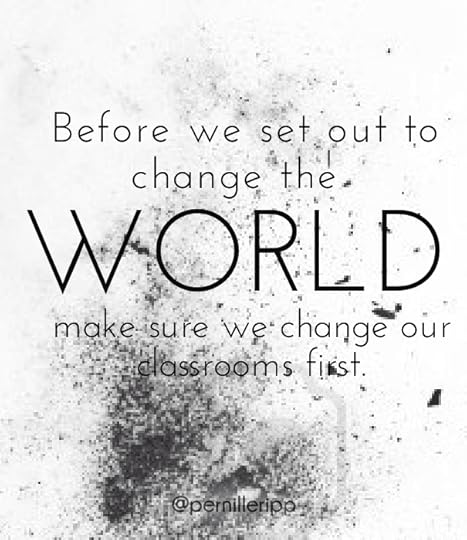
I never set out to be more than a teacher , to be a speaker, an author, as someone who people ask for advice. In fact, I still find the whole thing confounding, dumbfounded over how in the world I got so lucky to get to be inspired by so many others. To get to teach teachers, to learn with others, and to bring those things back to the incredible students I teach at the school I call home. And yet within this awestruck notion of being more is the truth of me; I may be many things, but the one thing I am first is the teacher to my own students.
So before I set out to change the world, I must first change the very classroom that I teach in. I must make sure that what I say I hold so dear is not just a stepping stone for bigger things.
Before I set out to change the world, I must make sure that the very thing that has given me the courage to speak up is still the very thing that gets the best of me. That the students, whose dreams I am trying to protect, are still the most important part.
Before I ask others to listen to the voice of their students, I must give my own students a place to speak up, to be heard, and plenty of time for them to find the words they need to share.
Before I ask others to change, I must change myself. Reflect on my own mistakes and become better. Reflect so I can grow and not pretend that I have all of the answers or all of the power.
Before I set out to change the world, I must make sure that the words I speak are the truth. That what my students and I do really is making a difference for the better. That what we say we do is really what we do and not just what we hope to do.
Before I tell others how to teach better, I must make sure I am a better teacher. That my teaching is not a point on the to-do list, but is the thing that challenges me in the very best kind of way. That my teaching really allows my students to be empowered, be engaged, be passionate.
Before I give others all of me, I must make sure that I have something to give to my students. That I take the time to get their lessons right. That I take the time to make it work for them before I share. That I take the time to make the time to be present when I teach and not think of the world that lies beyond. Because in our room, room 235D, I am not the teacher of the world. I am not an author. I am not a speaker. I am not the creator of the Global Read Aloud. I am the teacher of those 7th grade students that show up to English every day at Oregon Middle School. And that is the very best thing for me.
If you like what you read here, consider reading my book Passionate Learners – How to Engage and Empower Your Students. Also, if you are wondering where I will be in the coming year or would like to have me speak, please see this page.
Filed under: being a teacher, being me, Dream


December 5, 2015
Mind Your Skype Manners – Tips for Better Skype Calls

For the past many years, my students have Skyped with classrooms around the world as we have tried to let others into our class. We have shared our love of books through the Global Read Aloud, we have guessed their location through Mystery Skype, and we have asked questions as we did market research for projects we are doing. Skype is a part of our classroom and I would not want it any other way. But every year I have to remind my students how to act while Skyping, to mind their Skype manners as we proceed. Not because they are poorly behaved but because for some, this is the first time they have worked with others in this way and there are things they may not be aware of.
So what follows are our tips for minding your Skype manners.
Make your purpose meaningful and clear. We not only discuss how we will be Skyping but why and what the expected outcome should be. This small discussion allows my students to see the potential of the experience they are about to have, rather than just roll with it and assume it will be great.
Have roles or questions prepared. For Mystery Skype, each of my students has a job that they have picked and are held accountable for, for other Skype calls they have prepared questions in advance. They write them on notecards and hand them to me and I hand them back when it is time to ask it, at the end we always leave time for extra questions to be asked that have popped up as we listened.
Have a way to introduce yourself. I usually give students this job and some time to prepare something about our class. This also serves as a reminder of what the purpose is of the call as they restate that.
Brief the audience on body language. I have a wide lens camera when we Skype which means a lot of the kids can be seen in the background. We therefore discuss what our body language should look like and also what is visible on camera. The students know that if their shoulders are slumped or head is down, even though it is just because they are realizing, it may send a message of disinterest to others.
Mind your tone. My 7th graders are pretty funny but sometimes their sense of humor does not translate well via Skype. We therefore always a have a discussion of tone and the words we choose before we Skype. A gentle reminder is often all that they need to be aware of how they sound and to speak in a way that suits our audience.
Introduce yourself always. The students always start out by saying their name and then maintaining eye contact throughout.
Stay while listening. Often the natural reaction of a student is to ask their questions and then sit down, however, we think it is important to stay and listen to the whole answer then thank the speaker.
Give them a task during besides just listening. I have had students doodle during a class, take notes, or even have a backchannel on Todaysmeet. This is not just to share our learning but to focus students in. Even the most exciting Skype call can wear a kid out, so having them do something while they are listening helps them stay engaged and will make the call more meaningful.
Debrief. After the call we tend to just move on, yet, part of the magic of Skype is discussing what you learned. After our Mystery Skypes the students debrief in an attempt to get better. Other calls can be debriefed via conversation, small group aggregation of information and then crowd sourcing information into a Padlet or Google doc. Do something after the call to acknowledge what just happened rather than just move on.
Finally, don’t be afraid to end a call. I have only had to end a call once in our years of Skyping but I am so glad I did. My students were trying to be funny but were really coming off as rude. I simply told the other teacher that due to their behavior we had to end the call. We then discussed as a class what to do better next time. It was a great lesson for the kids, particularly when the tables were turned a few weeks later and they felt the other class was being rude to them.
If you are looking for great Skype opportunities, join the Skype in the Classroom site or become a member of the Global Read Aloud Facebook page, you can post requests on both.
Filed under: being a teacher, collaboration, global, skype, student voice


Would You Like to Be Our Readers?
As part of our epic non-fiction picture book project, we are looking for students to share these books with. The books have been created in Google slides so you will not need to print anything or send anything, just read them and fill out a form.
If you would like to receive some of our finished picture books to give feedback on and your teach 4th grade or younger, please fill out the form. Picture books will be shared at the end of December and you will have until mid-January to provide the feedback.
Filed under: being a teacher, collaboration, global


December 3, 2015
Our Epic Nonfiction Picture Book Project Take 2
For the past few years, my students have written nonfiction picture books for younger audiences around the world. Last year, I decided to share the lesson plan to serve as inspiration for those who wanted it, and this year I thought I would do the same. While the foundation is the same, the process has been tweaked a bit for a more meaningful experience for the students.
The goal of the project is rather simple; create a 15 to 25 slide/page nonfiction picture book meant for a 2nd or 3rd grade audience on anything you wish to write about. Throughout this project we have been able to successfully marry tech tools with writing, as well as use Skype, Padlet, Twitter and other interactive tools.
Why this project? Because within it we have been able to work on:
How to take organized notes in a way that works for them.
How to write a paragraph and all of the myriads of lessons that are attached to that.
Grammar! Spelling! Punctuation!
How to find legal images.
How to cite sources, including images, books, and websites.
How to uncover reliable sources (yes, there is a place for Wikipedia in our research).
How to search the internet better.
How to conduct market research using Skype to ask 2nd or 3rd graders what they want to read and how they want to read it.
How to rewrite information in our own words.
How to do design and layout on a page to make it inviting.
How to create good questions.
Exploring our own interests.
How to write assessment rubrics.
How to work as a peer mentor group.
How to monitor self-engagement.
So a few details about the project:
This is a 3-week long project, anchored by a 10 or so minute mini-lessons every day and then work time the rest of class.
Mini-lessons have centered around how to take notes ( I showed them 3 different ways), how to research well, how to write paragraphs, how to rewrite information, and anything else we have had to address.
Students were able to ask questions to 2nd and 3rd grade classrooms via Skype to do market research, and incorporate that feedback into their project.
I am using this blog and Facebook to find classrooms that will assess the final product. If you would like to be one, please fill out the form at the end of the post. Those that sign up to give us feedback, fill out this Google form.
Students create their books in Google Slides for easy access for all (we check out Chromebooks), as well as easy design and layout.
Major Changes for this year:
The addition of Google Classroom.
This year we have been using Google Classroom to post tools, create the project, as well as use as a gathering point. This addition has made it much more manageable as far as giving students the information they need, as well as seeing where students are. If you have not looked into Google Classroom, this is a great project to use it for.
The Peer Mentor Group.
Students are in peer mentor groups as of today. These groups are meant to be support groups that also help hold each other accountable. Students gave me three names; a friend they know well, someone they kind of know, and a name for someone they would like to know. I then made the groups puzzling out their requests. Groups are between 2 and 4 people are will be used almost every day as an informal check-in.
The shortened timeline.
Last year we did this project for 6 weeks and although the students stayed fully engaged, we shortened it to 3 because we realized we could achieve the same deep engagement with a shortened product. It also means the students are using their time better because they know every minute counts.
The actual lesson plan:
Expectations:
Finished product should be a 15 to 25 page book, created in Google Slides, that not only includes 4-5 or so “chapters/sub-topics” but also has a glossary, table of contents, works cited, front and back cover, as well as an about the author.
Font size of text should be at least 20.
Students will use at least one print research material and supplement with reliable internet sources.
We will use the website Easybib.com to cite all of our sources which will be done in conjunction with tech tools. Cross collaboration is a great idea here.
We will spend time in class researching, writing, as well as sharing our work. Students should be able to finish this in class if time is spent wisely.
Sample: Will be shown in class and linked to here.
Modifications/Support provided:
Some students will be invited to work in small groups with me and/or support teachers.
Graphic organizers and templates can be provided for those who need to follow a format. To access them, please go to this Google presentation and make a copy as needed.
Mini-Lesson Materials:
Every day, we will focus on a mini-lesson meant to bolster the skills and needs of the students. The following mini-lessons will be taught (in order):
Exploring NF picture books; what are their text features and why are they important? Template for this discovery can be found here.
What do you want to teach the world? Narrowing down topic and finding research materials. Brainstorming research questions to guide their reading.
Who is your audience? What do we know about 2nd and 3rd graders? Preparing for our market research Skype call. Creating a Padlet with what we think we know about 2nd and 3rd graders reading preferences. An example can be seen here. Students also meet in their peer mentor groups to share their topics, their questions and what they are excited about.
Skype call to classrooms, during the call students will take notes for themselves and afterwards we will update our Padlet with what we know now. Research time reading their books.
Taking 3 column notes in notebook or Google docs. Example template can be found here. More information on this type of note-taking can be seen here
Taking notes on notecards and providing graphic organizers for the notes. (I glued 6 envelopes into Manilla folders and then laminated them many years ago. These work well for students because they can use them to organize their notes in sub-topics and can write on the folders using dry erase markers.)
Using Diigo as a way to take notes (refresher from Tech tools).
Unscrambling a paragraph – parts of a paragraph (example taken from here)
Fill in the main idea and conclusion – found here
Informal to formal paragraph – found here Alternate is writing a sample paragraph
Teach to your partner, checklist can be found here
Table of contents – what does it do, what does it need?
Glossary – what does it do, what does it need?
Self-assessment, peer edit if they want to and review, checklist can be found here
Turn in
That’s it, pretty much. Feel free to modify/adapt/share.
If you would like to receive some of our finished picture books to give feedback on and your teach 4th grade or younger, please fill out the form. Picture books will be shared at the end of December and you will have until mid-January to provide the feedback.
Filed under: being a teacher, collaboration, global, Literacy, MIEExpert15, picture books, projects, Reading, skype, student choice


Dear Administrators – After the Observation

For many years, I have been told that I am a great teacher. In fact, the first time I was told that was my second observation as a brand-new teacher. Ironic considering I did not feel great at all. I was told that I knew what I was doing, that it seemed like I was on the right path. And while it certainly made me happy to have gone through my observation unscathed and even with a compliment, it also confused me. How could I be a great teacher if I was so new? How could I not have things to work on in the classroom? How could this be the epitome of great?
So for years, I always hoped for feedback that I could use. For questions that would make me grow. Sometimes ideas were shared, most of the time they were not as administrators were overwhelmed with even more things to do. And so I found my own professional development. I tore myself apart trying to figure out what I needed to work on. I reached out to others so that I could grow. But I always hoped that one day I would work for an administrator that would push me as well.
Last year, was my first year as a 7th grade teacher, and my first observation left me sleepless and nauseated. After all, it was pretty clear to me (and the world) that 7th grade was so far out of my comfort zone and was my biggest challenge yet, and there was so much for me to still learn. I didn’t know what to expect, I didn’t know what would be observed that I may have missed, I didn’t know what would be said after.
So it was with great anticipation I went to my post-observation meeting with my principal. Anticipation because I longed to be given advice, to be pushed to reflect, to not just be told the good things but to find a path to grow. And I was not disappointed. While my principal pointed out the great, she also asked me to reflect. She gave me ideas that I could try for things she had seen that I had not. She left me articles and emailed me blog posts as she tried to support my growth. That was the first time in 7 years that someone had done that for me. That was the first time that someone said; yes, you have room to grow, even if you are good, and here are some ideas.
So to all of you incredible administrators out there, to all of you who observe. Please push us. Please guide us. Please tell us the great, but then also please tell us the things we need to improve on. Give us articles that may help, blog posts, videos, take the time to help us reflect and grow. Make it as big of a deal for you as it is for us.
Stay current yourself so that you can pass on the information to others. If you have never taught a grade level or subject that you have to observe, please learn about it. Do not assume that your experience will be enough. Please become knowledgeable so that we can use you as a mentor. Be a role model when it comes to learning and growth and share your knowledge freely. My principal, Shannon Anderson, is the epitome of lifelong learning. She is not afraid to admit when she does not know something, but she will always jump right in with you to find out. And she is not alone, I know others like her, but I also know some that are not.
I know I am asking a lot. I know that administrators have so much to do already, and yet, the role of observer and mentor is one to be cherished, one to be nurtured. To have the ability to influence someone else’s professional growth is not something that should be shoved to the bottom of a much too long to-do list. Instead, make it your passion, realize the potential influence you can exert and use that power for good.
Being told what to work on was not a slap in the face, not when done correctly, instead it was a chance for me to re-evaluate practices that I had forgotten about. To reexamine some things I thought I had figured out. It was a chance for me to learn. A chance to grow. A chance to not just be great but be better. And better is what I strive for every day.
If you like what you read here, consider reading my book Passionate Learners – How to Engage and Empower Your Students. Also, if you are wondering where I will be in the coming year or would like to have me speak, please see this page.
Filed under: administration, aha moment, being a teacher, being me, principals


November 30, 2015
Great Middle Grade Books to Give As Gifts
Oh the middle grade book, one of my favorite categories of books because of the diversity there it be had. No wonder, this continues to be the most participated in category for the Global Read Aloud. This year brought amazing books to share with students or to read quietly. No wonder, there are so many of them I would love to give as gifts.

The Thing About Jellyfish by Ali Benjamin has shown up on many end of year best lists and there is a reason for that. With Suzy’s tale of how to survive after an unexpected death, this is a must read for many people.
From Amazon:
After her best friend dies in a drowning accident, Suzy is convinced that the true cause of the tragedy must have been a rare jellyfish sting-things don’t just happen for no reason. Retreating into a silent world of imagination, she crafts a plan to prove her theory–even if it means traveling the globe, alone. Suzy’s achingly heartfelt journey explores life, death, the astonishing wonder of the universe…and the potential for love and hope right next door.
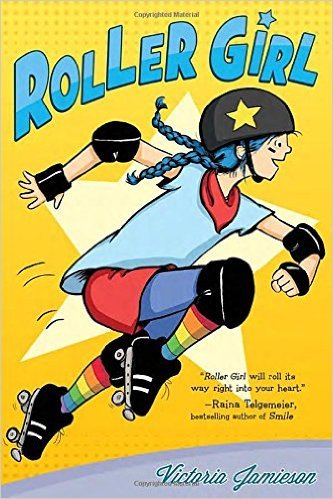
The graphic novel is a powerful one as evidenced by several of the suggestions on this list. Roller Girl by Victoria Jamieson continues the tradition of creating relatable stories with powerful characters. I disagree with Amazon, this books is not just for 10 year old girls.
From Amazon:
For most of her twelve years, Astrid has done everything with her best friend Nicole. But after Astrid falls in love with roller derby and signs up for derby camp, Nicole decides to go to dance camp instead. And so begins the most difficult summer of Astrid’s life as she struggles to keep up with the older girls at camp, hang on to the friend she feels slipping away, and cautiously embark on a new friendship. As the end of summer nears and her first roller derby bout (and junior high!) draws closer, Astrid realizes that maybe she is strong enough to handle the bout, a lost friendship, and middle school… in short, strong enough to be a roller girl.
[image error]
Another graphic novel for the list; Sunny Side Up by Jennifer L. Holm and Matthew Holm. This is the graphic novel of the year in my eyes since it gave us teachers a way to start hard conversations in our classrooms about addiction and a family in crisis. Don’t let the format deceive you; this is powerful reading.
From Amazon:
Sunny Lewin has been packed off to Florida to live with her grandfather for the summer. At first she thought Florida might be fun — it is the home of Disney World, after all. But the place where Gramps lives is no amusement park. It’s full of . . . old people. Really old people.
Luckily, Sunny isn’t the only kid around. She meets Buzz, a boy who is completely obsessed with comic books, and soon they’re having adventures of their own: facing off against golfball-eating alligators, runaway cats, and mysteriously disappearing neighbors. But the question remains — why is Sunny down in Florida in the first place? The answer lies in a family secret that won’t be secret to Sunny much longer. . .

I never loved the original babysitters club, I was always drawn to much darker books when I was young, but I love the graphic novel versions of them. Raina Telgemeier’s re-imagination of Ann M. Martin are fantastic for any child that loves graphic novels. And again, this is not “just” a girl book.
From Amazon:
Kristy, Mary Anne, Claudia, and Stacey are best friends and founding members of The Baby-sitters Club. Whatever comes up — cranky toddlers, huge dogs, scary neighbors, prank calls — you can count on them to save the day. Baby-sitting isn’t always easy, and neither is dealing with strict parents, new families, fashion emergencies, and mysterious secrets. But no matter what, the BSC have what they need most: friendship.

Any fantasy lover, young or old, should read the amazing Circus Mirandus by debut author Cassie Beasley. It is is whimsical, magical, and deep. The best combination of book in my opinion.
From Amazon:
Do you believe in magic?
Micah Tuttle does.
Even though his awful Great-Aunt Gertrudis doesn’t approve, Micah believes in the stories his dying Grandpa Ephraim tells him of the magical Circus Mirandus: the invisible tiger guarding the gates, the beautiful flying birdwoman, and the magician more powerful than any other—the Man Who Bends Light. Finally, Grandpa Ephraim offers proof. The Circus is real. And the Lightbender owes Ephraim a miracle. With his friend Jenny Mendoza in tow, Micah sets out to find the Circus and the man he believes will save his grandfather.
The only problem is, the Lightbender doesn’t want to keep his promise. And now it’s up to Micah to get the miracle he came for.
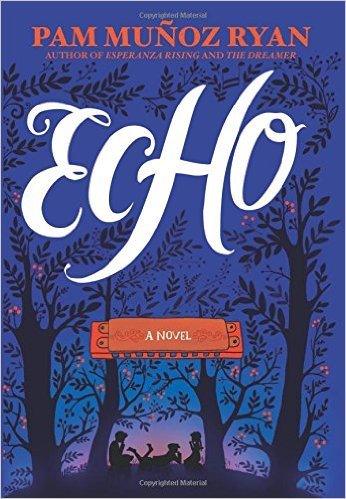
Pam Munoz Ryan does not need to prove her master storyteller status and yet she keeps writing books that do just that. Echo is an incredible book that can be loved by mangy ages.
From Amazon:
Lost and alone in a forbidden forest, Otto meets three mysterious sisters and suddenly finds himself entwined in a puzzling quest involving a prophecy, a promise, and a harmonica.
Decades later, Friedrich in Germany, Mike in Pennsylvania, and Ivy in California each, in turn, become interwoven when the very same harmonica lands in their lives. All the children face daunting challenges: rescuing a father, protecting a brother, holding a family together. And ultimately, pulled by the invisible thread of destiny, their suspenseful solo stories converge in an orchestral crescendo.
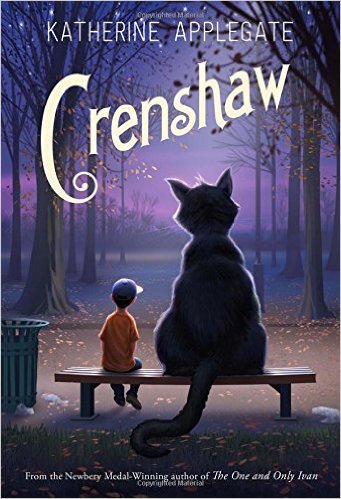
It is cause for celebration whenever Katherine Applegate releases a new book and Crenshaw is, indeed, a wonder. If you had told me that I would fall in love with a story that centered around poverty and an imaginary cat, I am not sure I would have believed you.
From Amazon:
Jackson and his family have fallen on hard times. There’s no more money for rent. And not much for food, either. His parents, his little sister, and their dog may have to live in their minivan. Again.
Crenshaw is a cat. He’s large, he’s outspoken, and he’s imaginary. He has come back into Jackson’s life to help him. But is an imaginary friend enough to save this family from losing everything?
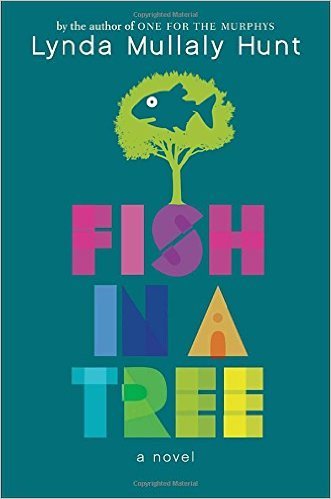
This list would be incomplete without Fish In A Tree by the talented Lynda Mullaly Hunt. This book, which was an official Global Read Aloud choice for this year, is one that is guaranteed to start conversations and have readers connect with it. I have loved it with my 7th graders but have heard children ages 8 and up loving it.
From Amazon:
Ally has been smart enough to fool a lot of smart people. Every time she lands in a new school, she is able to hide her inability to read by creating clever yet disruptive distractions. She is afraid to ask for help; after all, how can you cure dumb? However, her newest teacher Mr. Daniels sees the bright, creative kid underneath the trouble maker. With his help, Ally learns not to be so hard on herself and that dyslexia is nothing to be ashamed of. As her confidence grows, Ally feels free to be herself and the world starts opening up with possibilities. She discovers that there’s a lot more to her—and to everyone—than a label, and that great minds don’t always think alike.
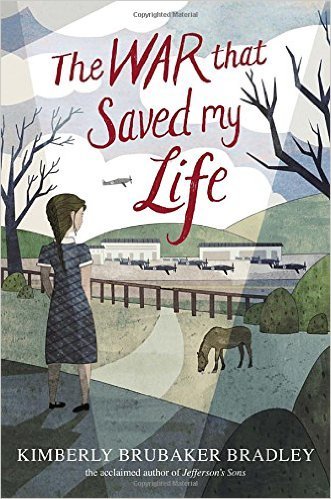
I would never have guessed that Ada with her club foot would stay in my heart as long as she had, but the book The War that Saved My Life by Kimberly Brubaker Bradley is one that remains with you long after it has been read.
From Amazon:
Nine-year-old Ada has never left her one-room apartment. Her mother is too humiliated by Ada’s twisted foot to let her outside. So when her little brother Jamie is shipped out of London to escape the war, Ada doesn’t waste a minute—she sneaks out to join him.
So begins a new adventure of Ada, and for Susan Smith, the woman who is forced to take the two kids in. As Ada teaches herself to ride a pony, learns to read, and watches for German spies, she begins to trust Susan—and Susan begins to love Ada and Jamie. But in the end, will their bond be enough to hold them together through wartime? Or will Ada and her brother fall back into the cruel hands of their mother?

Jennifer A. Nielsen is another author that I will buy and read all of her books, sight unseen. She consistently deliver high interest well written pieces that kids of many ages will love. Her latest book, A Night Divided, is no exception.
From Amazon:
With the rise of the Berlin Wall, twelve-year-old Gerta finds her family suddenly divided. She, her mother, and her brother Fritz live on the eastern side, controlled by the Soviets. Her father and middle brother, who had gone west in search of work, cannot return home. Gerta knows it is dangerous to watch the wall, to think forbidden thoughts of freedom, yet she can’t help herself. She sees the East German soldiers with their guns trained on their own citizens; she, her family, her neighbors and friends are prisoners in their own city.
But one day, while on her way to school, Gerta spots her father on a viewing platform on the western side, pantomiming a peculiar dance. Then, when she receives a mysterious drawing, Gerta puts two and two together and concludes that her father wants Gerta and Fritz to tunnel beneath the wall, out of East Berlin. However, if they are caught, the consequences will be deadly. No one can be trusted. Will Gerta and her family find their way to freedom?

Creepy, crawly, and oh so good, The Nest by Kenneth Oppel is a book that I book-talked only to have it checked out of my classroom library since then. Not a week goes by where a students does not ask where this book is.
From Amazon:
Steve just wants to save his baby brother—but what will he lose in the bargain? Kenneth Oppel’s (Silverwing, The Boundless) haunting gothic tale for fans of Coraline, is one of the most acclaimed books of the year, receiving six starred reviews. Illustrations from Caldecott Medalist Jon Klassen.
For some kids summer is a sun-soaked season of fun. But for Steve, it’s just another season of worries. Worries about his sick newborn baby brother who is fighting to survive, worries about his parents who are struggling to cope, even worries about the wasp’s nest looming ominously from the eaves. So when a mysterious wasp queen invades his dreams, offering to “fix” the baby, Steve thinks his prayers have been answered.
All he has to do is say “Yes.” But “yes” is a powerful word. It is also a dangerous one. And once it is uttered, can it be taken back?
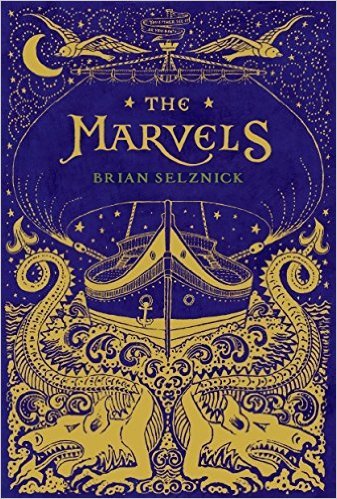
Ooh’s and aah’s erupted when I book-talked The Marvels by Brian Selznick to my 7th graders. He doesn’t need much introduction beside a reminder of what else he has written. The students already know that his book will be worth their time, and I agree.
From Amazon:
The journey begins on a ship at sea in 1766, with a boy named Billy Marvel. After surviving a shipwreck, he finds work in a London theatre. There, his family flourishes for generations as brilliant actors until 1900, when young Leontes Marvel is banished from the stage.
Nearly a century later, Joseph Jervis runs away from school and seeks refuge with an uncle in London. Albert Nightingale’s strange, beautiful house, with its mysterious portraits and ghostly presences, captivates Joseph and leads him on a search for clues about the house, his family, and the past.
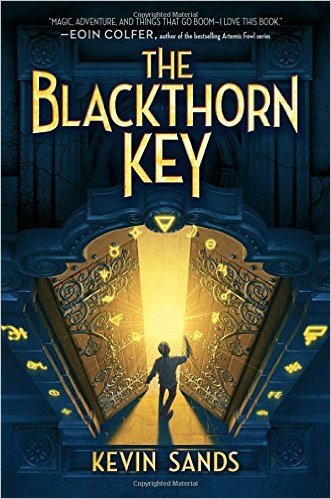
For fantasy fans comes this great new series with the first book Blackthorn Key by Kevin Sands. My only complaint is only that I have to wait for the sequel.
From Amazon:
“Tell no one what I’ve given you.”
Until he got that cryptic warning, Christopher Rowe was happy, learning how to solve complex codes and puzzles and creating powerful medicines, potions, and weapons as an apprentice to Master Benedict Blackthorn—with maybe an explosion or two along the way.
But when a mysterious cult begins to prey on London’s apothecaries, the trail of murders grows closer and closer to Blackthorn’s shop. With time running out, Christopher must use every skill he’s learned to discover the key to a terrible secret with the power to tear the world apart.
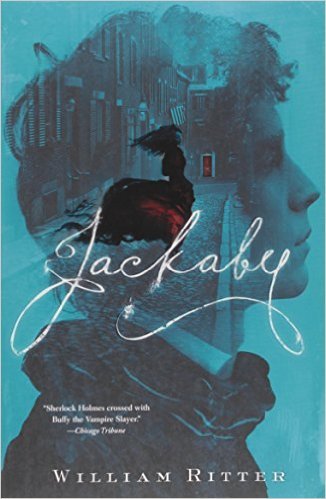 For those who like a magical mystery, the Jackaby series by William Ritter is sure to hit the spot. The first two books have been great and I cannot wait to see where the crazed, yet amazing, Jackaby takes on next.
For those who like a magical mystery, the Jackaby series by William Ritter is sure to hit the spot. The first two books have been great and I cannot wait to see where the crazed, yet amazing, Jackaby takes on next.
From Amazon:
Newly arrived in New Fiddleham, New England, 1892, and in need of a job, Abigail Rook meets R. F. Jackaby, an investigator of the unexplained with a keen eye for the extraordinary–including the ability to see supernatural beings. Abigail has a gift for noticing ordinary but important details, which makes her perfect for the position of Jackaby’s assistant. On her first day, Abigail finds herself in the midst of a thrilling case: A serial killer is on the loose. The police are convinced it’s an ordinary villain, but Jackaby is certain the foul deeds are the work of the kind of creature whose very existence the local authorities–with the exception of a handsome young detective named Charlie Cane–seem adamant to deny.

This is the book I handed to a reader who had yet to finish a book this year. This is the book that made that reader want to read just one more page. This is the book I need more copies of because we all have those readers that do not want to read. House Arrest by K.A. Holt is a must read.
From Amazon:
Timothy is on probation. It’s a strange word—something that happens to other kids, to delinquents, not to kids like him. And yet, he is under house arrest for the next year. He must check in weekly with a probation officer and a therapist, and keep a journal for an entire year. And mostly, he has to stay out of trouble. But when he must take drastic measures to help his struggling family, staying out of trouble proves more difficult than Timothy ever thought it would be. By turns touching and funny, and always original, House Arrest is a middlegrade novel in verse about one boy’s path to redemption as he navigates life with a sick brother, a grieving mother, and one tough probation officer.
Filed under: being a teacher


November 29, 2015
The Best Gifts Are Books – Some Gift Ideas for the Picture Book Lovers
Picking my favorite gifting picture books is hard! After all, there are so many incredible ones to choose from. These are for any adult or child that needs a great read. Some are silly. Some are serious. All can be used in the classroom if you are a teacher like me who is obsessed with using picture books with your students. They are all gorgeous and will make your reading life better, guaranteed.
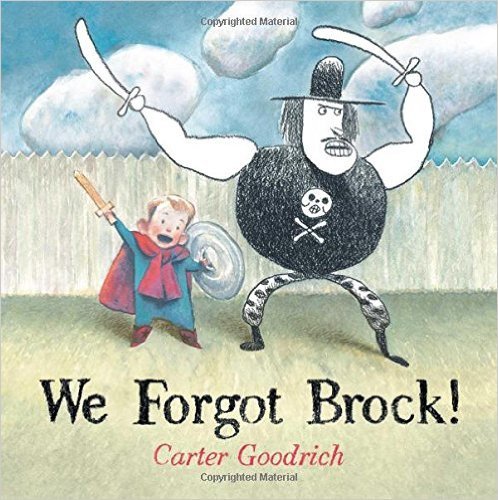
A sweet story about the power of an imaginary friend and how having someone no one else can see can become a problem. I love the book We Forgot Brock by Carter Goodrich because of the friendship it portrays.
From Amazon:
Phillip and Brock are best friends. Everyone can see Phillip, but only Phillip can see Brock.
A night at the Big Fair is all fun and games until Phillip gets sleepy, heads home, and forgets Brock!
Brock misses Phillip. And Phillip misses Brock. Will they reunite? With the help of another pair of pals, they just might. Because even imaginary friends get lost sometimes. Finding them is part of the adventure.

How can your imagination save the most boring story? I love the message of Battle Bunny written by Jon Sciezka and Mac Barnett, illustrated by Matthew Myers. This book is guaranteed to make people smile.
From Amazon:
When Alex gets a silly, sappy picture book called Birthday Bunny, he picks up a pencil and turns it into something he’d like to read: Battle Bunny. An adorable rabbit’s journey through the forest becomes a secret mission to unleash an evil plan–a plan that only Alex can stop. Featuring layered, original artwork, this dynamic picture book celebrates kids as storytellers.
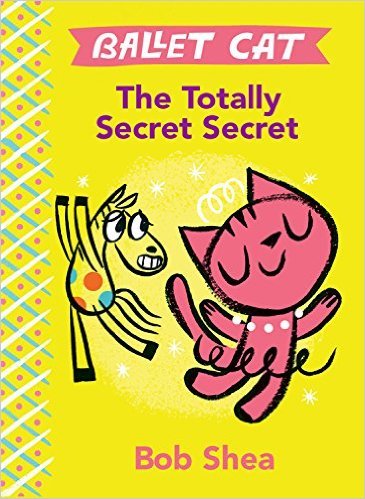
I have been a loud fan of Bob Shea’s for a long time. After all, he is the genius that wrote Unicorn Thinks He’s Pretty Great so I had to get Ballet Cat The Totally Secret Secret. It is laugh out loud funny. And the best part is that I can completely relate to the story and so can most people.
From Amazon:
Ballet Cat and Sparkles the Pony are trying to decide what to play today. Nothing that Sparkles suggests–making crafts, playing checkers, and selling lemonade–goes well with the leaping, spinning, and twirling that Ballet Cat likes to do. When Sparkles’s leaps, spins, and twirls seem halfhearted, Ballet Cat asks him what’s wrong. Sparkles doesn’t want to say. He has a secret that Ballet Cat won’t want to hear. What Sparkles doesn’t know is that Ballet Cat has a secret of her own, a totally secret secret. Once their secrets are shared, will their friendship end, or be stronger than ever?

Wild About Us by Karen Beaumont is a beautiful book in many ways. The illustrations done by Janet Stevens pop off the page and catch your eye, but the message of the book is what really got me. We all have things that we can pick apart, but what we do with those things is what matters.
From Amazon:
Warty Warthog may have warts and tusks, but he likes himself that way! Join him as he celebrates all of his animal friends and the attributes that make each one unique. Whether it’s Crocodile’s toothy grin or Kangaroo’s huge feet or Leopard’s spottiness, each animal is different. Wouldn’t it be dull if all the animals at the zoo—and all the people in the world—looked alike? A joyful picture-book celebration of everything that makes us individuals!

It is a celebration in my life whenever the talented Ame Dyckman comes out with a new picture book and Wolfie the Bunny was definitely a cause for celebration. This book about assumptions and what they can lead to has not only made my students laugh out loud, but more importantly, has led us to question our own assumptions about others.
From Amazon:
The Bunny family has adopted a wolf son, and daughter Dot is the only one who realizes Wolfie can–and might–eat them all up! Dot tries to get through to her parents, but they are too smitten to listen. A new brother takes getting used to, and when (in a twist of fate) it’s Wolfie who’s threatened, can Dot save the day?
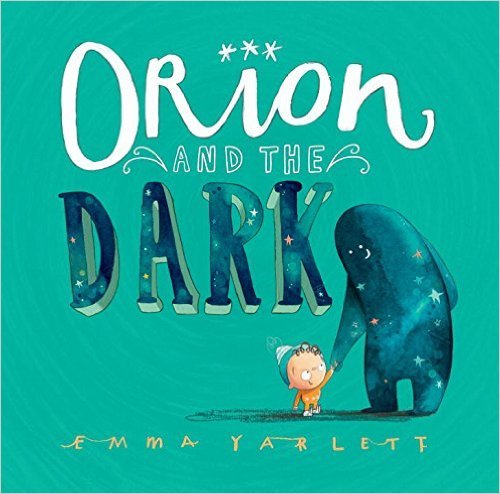
Orion and the Dark by Emma Yarlett is stunning. The story about a boy who is afraid of the dark is sure to elicit conversations about our fears and what we can do to conquer them. This is a book my students keep reaching for in the classroom and that I have used with my own children as they tell me they are afraid of the dark.
From Amazon:
Orion is scared of a lot of things, but most of all he’s scared of the dark. So one night the Dark decides to take Orion on an adventure. Emma Yarlett’s second picture book combines her incredible storytelling and artwork with die-cut pages that bring the Dark to life.

The beautiful story of Last Stop On Market Street by Matt De La Pena is one meant to spur conversation about our lives, our assumptions, and how we view the world. But the illustrations? They tell an even richer story, one that I cannot wait to discuss with my students and my own kids, many of whom have never ridden a bus or even been in an urban neighborhood.
From Amazon:
Every Sunday after church, CJ and his grandma ride the bus across town. But today, CJ wonders why they don’t own a car like his friend Colby. Why doesn’t he have an iPod like the boys on the bus? How come they always have to get off in the dirty part of town? Each question is met with an encouraging answer from grandma, who helps him see the beauty—and fun—in their routine and the world around them.

The North Star by Peter H. Reynolds is one of my favorite picture books ever written. This is the final book I read to my students every year as I hope it inspires them to take a risk and find their own path in life.
From Amazon:
It is often said that life is a journey, and it’s true. But sometimes it’s hard to know which path to follow when signs point in so many directions. In this beautifully illustrated book, Peter H. Reynolds once again encourages readers to observe, to wonder, and to consider diverging from the well-worn path — to pursue their dreams. Originally published more than ten years ago, THE NORTH STAR has had a profound effect on its many readers. This edition, featuring all new art, celebrates the book’s own voyage connecting people around the world. It has inspired classroom activities, a musical, and countless thoughtful journeys.
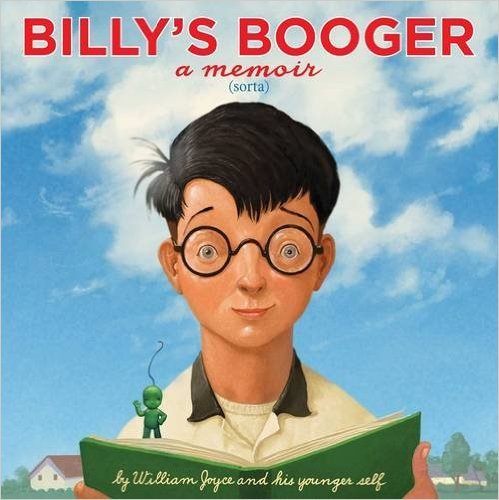
I love Billy’s Booger – A Memoir by William Joyce for many reasons; the narrative is great, it is great as a teaching book on story arc, and it has boogers in the title, which is sure to hook many readers.
From Amazon:
A young lad who would rather draw than do math, spell, or gargle finds the perfect outlet for his always-on imagination in this manifesto to creative joie de vivre, featuring a book within a book, from the brilliant minds that brought you The Fantastic Flying Books of Mr. Morris Lessmore.
Billy loves to draw. He draws on books and on his homework and even on his math tests—he might not get the answer right, but doesn’t it look swell sitting in a boat at sea? His teacher doesn’t think so, and neither does the principal. But the librarian has an idea that just might help Billy better direct his illustrative energies: a book-making contest!
Billy gets right to work, reading everything he can about meteors, mythology, space travel, and…mucus? Yep, his book is going to be about the world’s smartest booger, who stays tucked away until needed—say, to solve multiplication problems, or answer questions from the President. Billy’s sure his story is a winner. But being a winner doesn’t mean you always win.

Boats for Papa is a picture book by Jessixa Bagley that I immediately fell in love with. The story does not tell us where papa is, nor why the mother does what she does, and yet every child (or adult) that reads it seems to come up with their own story. An inspired story that leaves us thinking.
From Amazon:
Buckley and his Mama live in a cozy cabin by the ocean. He loves to carve boats out of the driftwood he finds on the beach nearby.
He makes:
big boats
long boats
short boats and
tall boats,
each one more beautiful than the last, and sends them out to sea. If they don’t come back, he knows they’ve found their way to his papa, whom he misses very much.
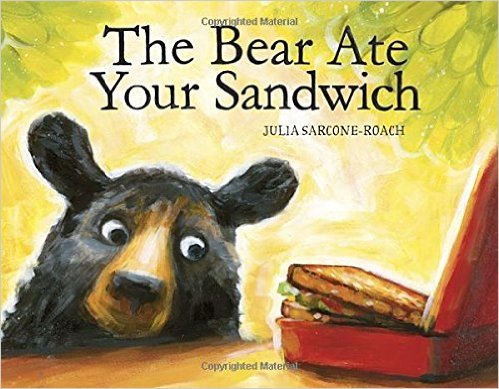
This amusing story of what really happened to a sandwich creates pretty funny conversations with kids. The Bear Ate Your Sandwich by Julia Sarcone-Beach is one that makes me giggle every time I read it aloud and then leads to heated discussions of what exactly did happen to that sandwich?
From Amazon:
By now I think you know what happened to your sandwich.
But you may not know how it happened.
So let me tell you.
It all started with the bear . . .
So begins Julia Sarcone-Roach’s delicious tale of a bear, lost in the city, who happens upon an unattended sandwich in the park. The bear’s journey from forest to city and back home again is full of happy accidents, funny encounters, and sensory delights. The story is so engrossing, it’s not until the very end that we begin to suspect this is a TALL tale.

Finding Winnie by Lindsay Mattick and illustrated by Sophie Blackall made me cry, which even surprised me. I grew up aware of Winnie the Pooh but not immersed in the world as many others, and the tale of the inspiration behind the stories really struck a chord with me, as I suspect it will for many others.
From Amazon:
In 1914, Harry Colebourn, a veterinarian on his way to tend horses in World War I, followed his heart and rescued a baby bear. He named her Winnie, after his hometown of Winnipeg, and he took the bear to war.
Harry Colebourn’s real-life great-granddaughter tells the true story of a remarkable friendship and an even more remarkable journey–from the fields of Canada to a convoy across the ocean to an army base in England…
And finally to the London Zoo, where Winnie made another new friend: a real boy named Christopher Robin.

Another book that is great for deeper level conversations as students try to decide why that skunk keeps following the main character. My own kids were mesmerized by the story, which says a lot considering they are hardly ever sit still. I have many of Mac Barnett’s and Patrick McDonnell’s book and love having The Skunk as well.
From Amazon:
When a skunk first appears in the tuxedoed man’s doorway, it’s a strange but possibly harmless occurrence. But then the man finds the skunk following him, and the unlikely pair embark on an increasingly frantic chase through the city, from the streets to the opera house to the fairground. What does the skunk want? It’s not clear―but soon the man has bought a new house in a new neighborhood to escape the little creature’s attention, only to find himself missing something. . .

Shhh! We Have a Plan by Chris Haughton has been read in my house countless times, preferably repeatedly. Every time my kids laugh out loud and then tell me what is going to happen. The funny thing is the same thing happened in my classroom.
From Amazon:
Four friends creep through the woods, and what do they spot? An exquisite bird high in a tree! “Hello birdie,” waves one. “Shh! We have a plan,” hush the others. They stealthily make their advance, nets in the air. Ready one, ready two, ready three, and go! But as one comically foiled plan follows another, it soon becomes clear that their quiet, observant companion, hand outstretched, has a far better idea.

Just seeing the image of the cover of I’m Trying to Love Spiders by Bethany Barton makes me laugh. This incredible non-fiction picture book that doesn’t scream non-fiction (not that there is anything wrong with non-fiction) is the perfect gift for the person who hates spiders.
From Amazon:
The Official Spider Test.
What do you do when you see a spider?
a. Lay on a BIG spidey smoocheroo.
b. Smile, but back away slowly.
c. Grab the closest object, wind up, and let it fly.
d. Run away screaming.
If you chose b, c, or d, then this book is for you! (If you chose a, you might be crazy.)
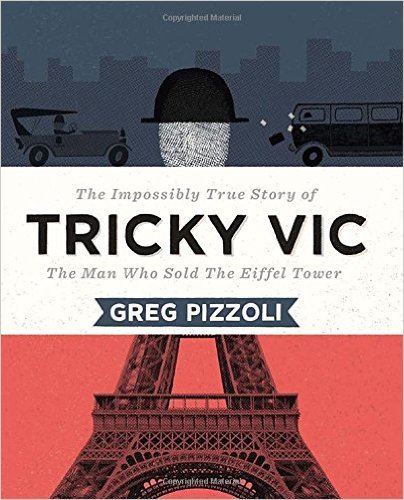
For all you history lovers Tricky Vic – the Man Who Sold the Eiffel Tower by Greg Pizzoli is a masterpiece. A page-turning read that makes you shake your head in wonder. This is a picture book for all ages.
From Amazon:
In the early 1900s, Robert Miller, a.k.a. “Count Victor Lustig,” moved to Paris hoping to be an artist. A con artist, that is. He used his ingenious scams on unsuspecting marks all over the world, from the Czech Republic, to Atlantic ocean liners, and across America. Tricky Vic pulled off his most daring con in 1925, when he managed to “sell” the Eiffel Tower to one of the city’s most successful scrap metal dealers! Six weeks later, he tried to sell the Eiffel Tower all over again. Vic was never caught. For that particular scam, anyway. . . .
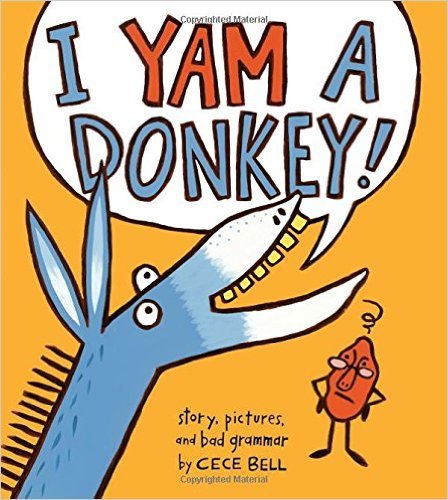
I Yam A Donkey by the incredible CeCe Bell. Why this book? Because it is laugh out loud funny while teaching grammar. My 23 month old picks this book up every day asking us to read about the donkey.
From Amazon:
Even frustrated grammarians will giggle at the who’s-on-first routine that begins with a donkey’s excited announcement, “I yam a donkey!” Unfortunately the donkey’s audience happens to be a yam, and one who is particular about sloppy pronunciation and poor grammar. An escalating series of misunderstandings leaves the yam furious and the clueless donkey bewildered by the yam’s growing (and amusing) frustration. The yam finally gets his point across, but regrettably, he’s made the situation a little bit too clear . . . and the story ends with a dark and outrageously funny twist.
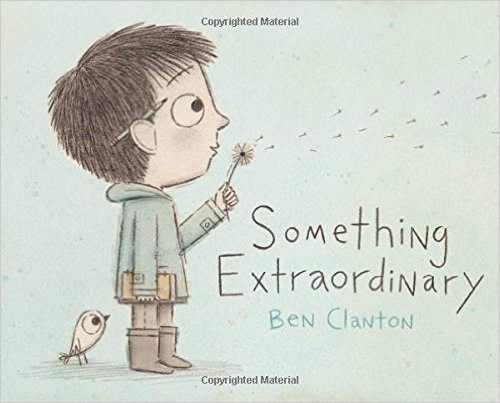
Ben Clanton’s Something Extraordinary is just that – extraordinary. Once again a simple story unfolds leading us to rich conversations about imagination and how it can color our world.
From Amazon:
Amazing things are happening all around you. You just need to know where to look—and this whimsical picture book is the perfect place to start.
Have you ever wished for something extraordinary? Like the ability to fly? Or to breathe underwater? What if you could talk to animals?
It’s fun to wish for amazing things. But take a look around, and you just might find that the most “ordinary” things…can be extraordinary.

Waiting by Kevin Henkes is a quiet masterpiece that kids of all ages can realte to. What I loved the most were the different reactions my children had to the book and how they kept reaching for it over and over.
From Amazon:
Five friends sit happily on a windowsill, waiting for something amazing to happen. The owl is waiting for the moon. The pig is waiting for the rain. The bear is waiting for the wind. The puppy is waiting for the snow. And the rabbit is just looking out the window because he likes to wait! What will happen? Will patience win in the end? Or someday will the friends stop waiting and do something unexpected?

The incredible story of the first enslaved poet, George Moses Horton, unfolds in this picture book by Don Tate. Illustrating a piece of history I had never encountered Poet: The Remarkable Story of George Moses Horton is a must add for anyone that loves poetry.
From Amazon:
In the nineteenth century, North Carolina slave George Moses Horton taught himself to read and earned money to purchase his time though not his freedom. Horton became the first African American to be published in the South, protesting slavery in the form of verse.

The Only Child by Guojing is a wordless picture book that will leave you speechless. Beautiful. Mesmerizing and one that you want to read multiple times.
From Amazon:
A little girl—lost and alone—follows a mysterious stag deep into the woods, and, like Alice down the rabbit hole, she finds herself in a strange and wondrous world. But… home and family are very far away. How will she get back there?
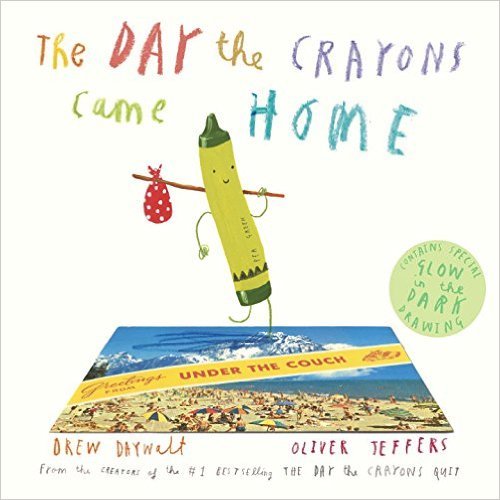
If you have not discovered the brilliance of the Crayons series then this is a great way to start. The Day the Crayons Came Home by Drew Daywalt and illustrated by Oliver Jeffers is great for home and the classroom, with its beautiful illustrations and laugh out loud crayon stories, this will surely be read many times.
From Amazon:
I’m not sure what it is about this kid Duncan, but his crayons sure are a colorful bunch of characters! Having soothed the hurt feelings of one group who threatened to quit, Duncan now faces a whole new group of crayons asking to be rescued. From Maroon Crayon, who was lost beneath the sofa cushions and then broken in two after Dad sat on him; to poor Turquoise, whose head is now stuck to one of Duncan’s stinky socks after they both ended up in the dryer together; to Pea Green, who knows darn well that no kid likes peas and who ran away—each and every crayon has a woeful tale to tell and a plea to be brought home to the crayon box.
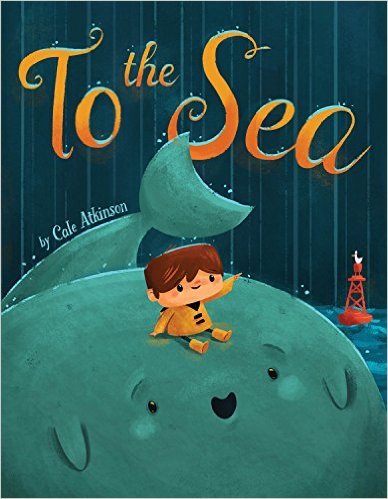
To the Sea by Cale Atkinson is a beautiful tale of a young boy who feels lonely. When he meets a lost whale his life changes. Simple, deep, and powerful.
From Amazon:
Sometimes Tim feels invisible at school—until one day, when Tim meets Sam. But Sam isn’t just any new friend: he’s a blue whale, and he can’t find his way home!
Returning Sam to the sea is hard work, but Tim is determined to help. After all, it’s not every day you meet a new friend!
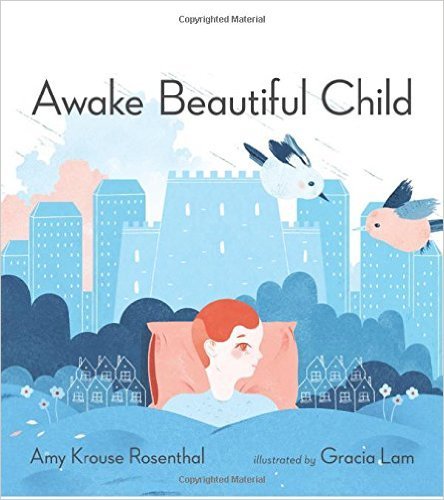
Awake Beautiful Child by Amy Krouse Rosenthal and illustrated by Gracia Lam should be a mandatory baby gift. As the mother of 4 myself, this left me thinking just how lucky I am.
From Amazon:
New York Times best-selling picture-book author Amy Krouse Rosenthal teams with award-winning artist Gracia Lam to tell the sweet, simple story of a young child’s typical day—from morning to bedtime. Like the title, each scene is described in three-word “ABC” phrases, such as “All Begins Cheerily” and “Always Be Curious.” Secret “ABC” scenes hidden throughout the artwork—as a secondary “seek and find” game of sorts—encourage multiple readings and reward close-looking.
So which books did I miss? Which picture books will you be giving to the picture book lovers in your life?
Don’t miss the post on which YA books to give this year as well.
Filed under: being a teacher, books, Literacy, picture books, Reading





